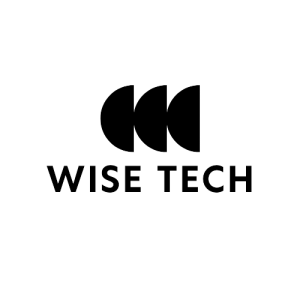Understanding the Concept of Inbound Closing
Inbound closing is a modern approach to sales that focuses on converting warm leads—those who have already shown interest in a product or service—into paying clients. Unlike traditional sales methods that rely on cold calls or unsolicited outreach, inbound closing works with potential buyers who come through marketing channels such as social media, ads, email campaigns, or content marketing. These prospects are already aware of what they want, and the role of an inbound closer is to help them make an informed decision. This process aligns more with guidance than persuasion, making it a natural fit for businesses offering premium or high-ticket services.
The power of inbound closing lies in understanding buyer psychology. Today’s consumers no longer respond well to aggressive tactics or sales pressure. Instead, they value authenticity, trust, and connection. Inbound closers leverage this by positioning themselves as trusted advisors who focus on solving customer problems rather than just closing deals. This human-centered approach has transformed the sales landscape, especially for digital businesses and personal brands aiming to build long-term client relationships.
How the Inbound Closing Process Works
The inbound closing process begins long before the actual sales conversation. It starts when marketing efforts attract potential customers through valuable content or compelling offers. These leads are nurtured through automated emails, webinars, or consultations until they’re ready to speak with a closer. Once the conversation begins, the inbound closer’s job is to understand the lead’s needs, motivations, and pain points. Unlike cold calling, where the goal is to convince someone who may not be interested, inbound closing focuses on guiding someone who already has intent to buy.
Here’s how a typical inbound closing process unfolds:
- A prospect interacts with marketing materials and books a call or demo.
- The inbound closer reviews the lead’s information and prepares questions to uncover goals and challenges.
- During the call, the closer builds rapport and identifies whether the offer truly fits the client’s needs.
- If it’s a match, the closer presents the offer, addresses objections, and facilitates the purchase.
- After the sale, the closer ensures a smooth transition to onboarding or delivery.
Each step is strategic, designed to nurture trust and create an experience that feels helpful instead of pushy. This approach results in higher conversion rates and greater customer satisfaction, since buyers feel genuinely understood.
The Role of an Inbound Closer in Modern Businesses
An inbound closer serves as the bridge between marketing and sales. Their role is not just to sell but to ensure that the right clients are saying yes to the right offer. They listen carefully, ask the right questions, and match the customer’s needs to the business’s solutions. Inbound closers are skilled communicators who know how to turn genuine interest into confident decisions.
Unlike appointment setters or outbound representatives who focus on outreach, inbound closers manage pre-qualified leads. They spend more time understanding the emotional and logical reasons behind a purchase. This means being empathetic, knowledgeable, and persuasive without sounding scripted. Industries such as coaching, real estate, and SaaS benefit greatly from inbound closers because these sectors rely on trust-based transactions. When buyers feel they are being guided by someone who understands their goals, they are far more likely to invest.
Inbound closers often collaborate closely with marketing teams to refine lead quality and provide feedback. This ongoing alignment helps improve overall performance, ensuring that both sales and marketing work hand in hand toward the same goal—satisfied, long-term clients.
Core Skills and Techniques for Effective Inbound Closing
Inbound closing is a skill set built on empathy, communication, and strategic questioning. Great closers don’t just talk—they listen deeply. They understand that every potential client has specific challenges, and they tailor their approach accordingly. One of the most critical abilities is building rapport early in the conversation. When a lead feels seen and heard, trust naturally develops.
Essential inbound closing techniques include:
- Asking open-ended questions that encourage meaningful dialogue
- Listening for emotional cues and responding with empathy
- Using storytelling to illustrate how the offer solves real problems
- Managing objections without pressure or defensiveness
- Framing the offer as an investment, not an expense
Effective inbound closers also know how to read verbal and non-verbal signals, adapting their approach based on client energy and tone. They close sales by creating clarity, not confusion. Instead of forcing a decision, they guide clients toward realizing why the solution fits perfectly with their goals.
Tools and Technology That Support Inbound Closers
Inbound closers rely on a variety of digital tools to streamline communication, organization, and performance tracking. Customer Relationship Management (CRM) systems such as HubSpot or Salesforce help them keep track of leads, calls, and deal stages. These platforms also provide insights into conversion rates and buyer behavior.
Key technologies that enhance inbound closing efficiency include:
- CRM systems for managing leads and tracking engagement
- Scheduling tools like Calendly to automate appointment booking
- Communication platforms like Zoom for virtual consultations
- Email automation systems for follow-ups and nurturing sequences
- Analytics tools to measure close rates and performance metrics
Artificial Intelligence (AI) now plays a growing role in inbound sales, automating repetitive tasks such as lead scoring and data entry. This allows closers to focus more on meaningful interactions with prospects. The right tools not only save time but also ensure that no opportunity falls through the cracks.
Benefits of Implementing an Inbound Closing Strategy
Inbound closing offers numerous advantages that extend beyond immediate sales results. Businesses that adopt this strategy often experience higher conversion rates because they’re targeting leads already familiar with their brand. Moreover, these leads are more likely to convert into loyal customers due to the personalized and trust-based approach of inbound sales.
Some of the top benefits include:
- Increased conversion rates from pre-qualified leads
- Stronger client relationships built on transparency and trust
- Lower customer acquisition costs compared to outbound methods
- Consistent revenue growth through predictable lead nurturing
- Greater customer satisfaction and retention
Inbound closing also empowers teams to work smarter. Instead of spending energy on uninterested prospects, they focus on leads that are most likely to convert. This efficiency allows businesses to scale without compromising the quality of their interactions.
Common Challenges in Inbound Closing and How to Overcome Them
While inbound closing is effective, it comes with its own challenges. One major issue is managing indecisive leads who take longer to make decisions. Inbound closers must develop patience and follow-up strategies that maintain interest without seeming intrusive. Another challenge is time management—handling multiple inquiries can quickly become overwhelming without proper organization.
To overcome these challenges, inbound closers can:
- Use CRM reminders for timely follow-ups
- Automate repetitive tasks using AI tools
- Set clear expectations during the first conversation
- Regularly review data to identify where leads drop off
- Practice active listening to uncover hidden objections
Aligning sales and marketing is another essential step. When both departments work cohesively, leads move through the pipeline more smoothly, and closers can focus on quality rather than quantity.
Real-World Scenarios: How Inbound Closing Impacts Revenue Growth
Imagine a business coach offering a premium mentorship program. Through content marketing, they attract professionals who are already seeking transformation. When a lead books a call, the inbound closer listens to their goals, addresses their concerns, and explains how the program helps achieve tangible results. Because the lead already knows the brand and recognizes its value, the conversion rate is much higher compared to cold calling.
SaaS companies also thrive using inbound closing. When users sign up for free trials, inbound closers reach out to understand their experience and guide them toward paid plans. The conversation revolves around the customer’s needs, not the features alone. This customer-centric model leads to stronger brand loyalty and recurring revenue.
FAQs About Inbound Closing
What makes inbound closing different from outbound sales?
Inbound closing focuses on leads who have already shown interest, while outbound sales involve reaching out to cold prospects who may not know the product.
Is inbound closing suitable for beginners in sales?
Yes, as long as they receive proper training. Beginners can excel by learning communication and listening skills early.
What types of businesses benefit the most from inbound closers?
Coaching, consulting, real estate, SaaS, and digital marketing agencies gain significant benefits from inbound closing.
How do inbound closers get trained or certified?
They can join online training programs or mentorships that specialize in inbound sales psychology and communication techniques.
What metrics define success in inbound closing?
Key metrics include conversion rate, average deal size, client satisfaction score, and retention rate.
Takeaway
Inbound closing is more than a sales strategy—it’s a customer-first philosophy that emphasizes trust, empathy, and communication. By focusing on pre-qualified leads and genuine connection, inbound closers help businesses grow sustainably while delivering real value to clients. With the right mindset, tools, and techniques, anyone can master the art of inbound closing and transform warm conversations into loyal partnerships.













